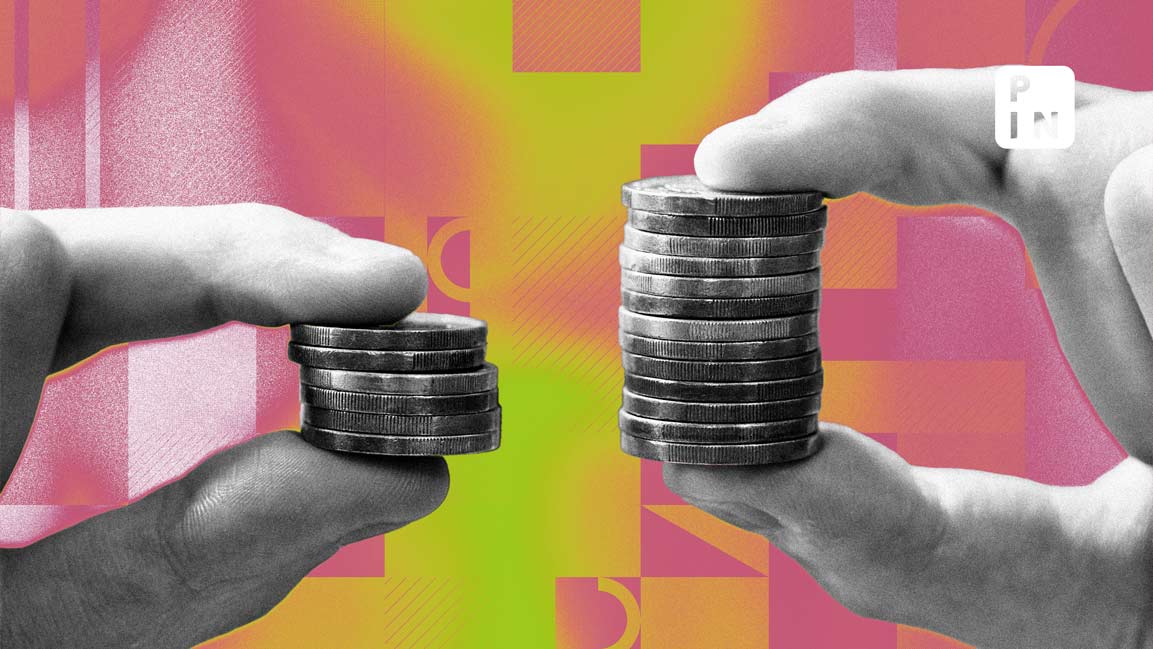- | 5:00 pm
Inequality widening rapidly in India, top 1% owns 40% of assets: report
The rise of top-end inequality has been particularly pronounced between 2014-15 and 2022-23 in terms of wealth concentration, the working paper says

The shares of income and wealth of the top 1% population in India have risen to 22.6% and 40.1%, respectively, in 2022-23, new research showed.
The inequality is among the very highest in the world, higher than even South Africa, and Brazil, according to research published in a working paper.
The paper, titled Income and Wealth Inequality in India, 1922-2023: The Rise of the Billionaire Raj, combines national income accounts, wealth aggregates, tax tabulations, billionaire rankings, rich lists, and surveys on income, consumption, and wealth in a consistent framework to present long-run homogeneous income and wealth inequality series going back till 1922 for incomes and 1961 for wealth.
The paper is authored by Nitin Kumar Bharti (New York University and World Inequality Lab), Lucas Chancel (Sciences Po, Harvard Kennedy School and World Inequality Lab), Thomas Piketty (Paris School of Economics and World Inequality Lab), and Anmol Somanchi ( Paris School of Economics and World Inequality Lab).
The income shares of the top 10% started rising rapidly after the liberalization reforms of 1991, and have reached astonishingly high levels by 2022, closing in on 60%. In the four decades between 1982 and 2022, the national income share of the top 10% has almost doubled, the paper found.
From the early 2000s onward, the share of national income owned by the wealthiest 10% of the population surpassed that of the middle 40%. By 2022, this disparity widened, with the top 10% controlling 57.7% of national income, while the middle 40% held only 27.3%.
The rise of top-end inequality has been particularly pronounced between 2014-15 and 2022-23 in terms of wealth concentration, the paper said.
“Between 2014-15 and 2022-23, the rise of top-end inequality has been particularly pronounced in terms of wealth concentration. By 2022-23, the income and wealth shares of this top 1% reached 22.6% and 40.1%, respectively, marking the highest levels of inequality recorded historically for India. Additionally, the income share of India’s top 1% is noted as one of the highest globally, indicating an extreme concentration of wealth within a very small fraction of the population, the paper said.
The paper noted, citing the annual Forbes rich lists, that the net wealth of billionaire Indians has grown by over 280% cumulatively between 2014 and 2022 in real terms, 10 times the growth rate of national income over the same period (27.8%).
It said India’s top 1% population’s income share appears to be among the highest in the world behind only perhaps Peru, Yemen and a couple of other small countries.
When looking at the distribution of wealth among the richest individuals, India’s wealth concentration among the top 10% and top 1% places it in a moderate position compared to other countries, the study said.
Brazil and South Africa stand out for their particularly high levels of wealth concentration, with the top 10% in these countries holding 85.6% and 79.7% of the total wealth, respectively, the paper said.
“As per our benchmark estimates, the ‘Billionaire Raj’ headed by India’s modern bourgeoisie is now more unequal than the British Raj headed by the colonialist forces,” it added.
The paper said the Indian income tax system might be regressive when viewed from the lens of net wealth, and recommended a reform to include “super tax” for the top 2% of the population.
“A restructuring of the tax code to account for both income and wealth, and broad-based public investments in health, education and nutrition are needed to enable the average Indian, and not just the elites, to meaningfully benefit from the ongoing wave of globalization,” it noted.
“Besides serving as a tool to fight inequality, a “super tax” of 2% on the net wealth of the 167 wealthiest families in 2022-23 would yield 0.5% of national income in revenues and create valuable fiscal space to facilitate such investments,” the paper said.
The paper also noted the quality of economic data in India is notably poor and has seen a decline recently.












